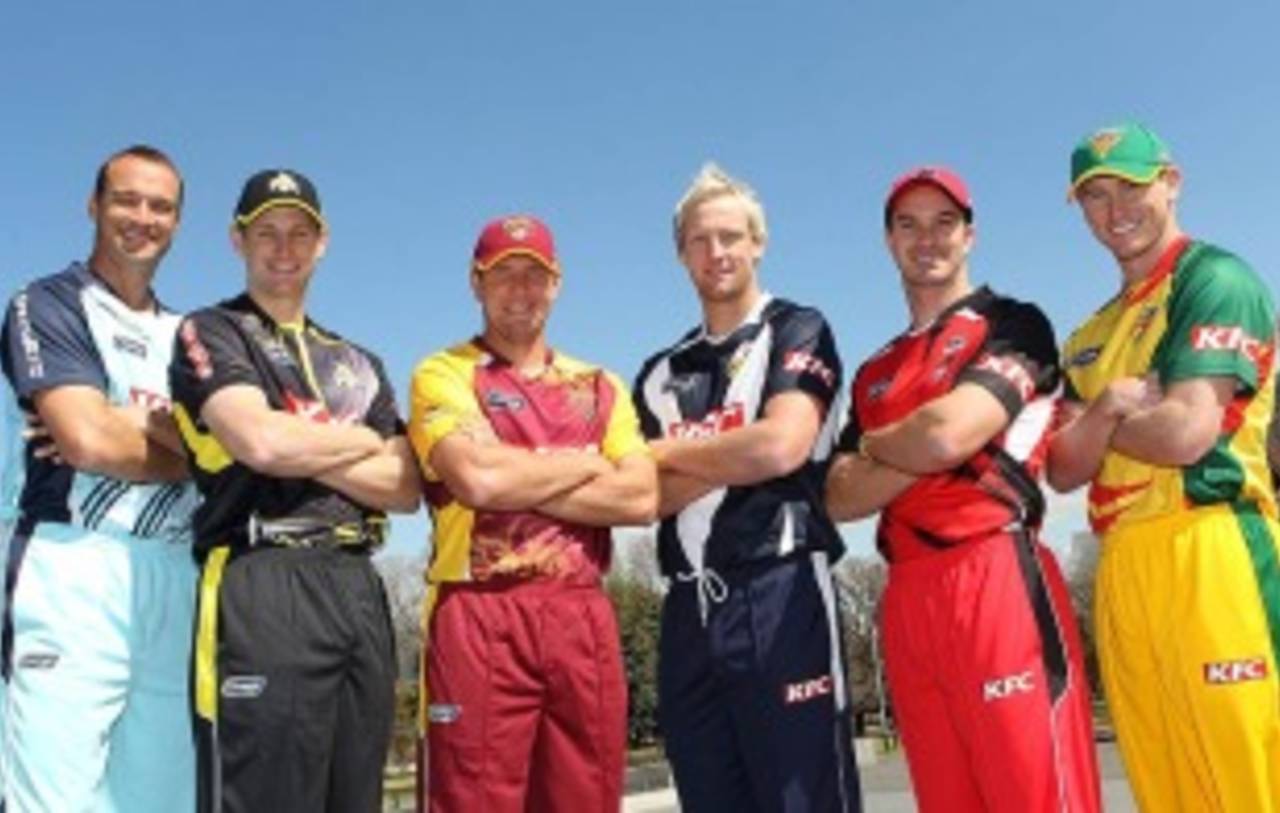It's always hard for a new captain to juggle the requirements of one-day cricket, calculating bowling changes, deciding on powerplays and setting restricted fields. But Australia's new domestic limited-overs format turns all six state leaders into first-time captains. Everything is different, and everyone is learning on the run.
The Ryobi One-Day Cup kicks off at the Gabba on Wednesday, when Queensland host Tasmania. There are a range of new rules, but the key changes are that each side bats for 45 overs in blocks of 20 and 25; teams can use 12 players; bowlers may bowl 12 overs; powerplays are abolished; and there is one competition point available for a "first-innings" lead.
Even basic cricket principles such as whether teams will prefer to bat first need to be reassessed. Stuart Clark, the acting captain of New South Wales, said it would be a learning process for all concerned.
"There is an idea that it might be better to chase first, given that no one really knows what a good score is or how you should go about the game," Clark said. "But conversely, if you get some runs on the board there could be a lot of pressure as well."
The removal of powerplays takes one tactical decision out of the captain's hands, but instead there are set periods of field restrictions. Importantly, no more than four fielders can ever be outside the circle, down from the figure of five in regular 50-over cricket, which poses an extra challenge for bowlers.
"I think it will be a little bit hard for spinners, with only the four fielders out but they're going to have to make adjustments to their game and work out the best way of being successful," Clark said. "Teams will come out and attack different sorts of bowlers, try and be defensive against other types and captains are going to have to set unusual fields at times to try and protect the runs from blowing out."
Tasmania last year sailed to the Ford Ranger Cup title by using two spinners, Jason Krejza and Xavier Doherty, and often opened with one of the slow men. The Tigers captain George Bailey said they would still aim to play the two tweakers, which had worked in practice split-innings fixtures.
"We've had some good success with our two spinners in trial games, still being able to bowl really successfully," Bailey said. "It provides a challenge not having the extra bloke out, in terms of boundaries, but it also means there's an extra bloke in the infield to take catches and create wickets as well. Good bowlers will work it out pretty quickly."
Although Tasmania are the defending champions, Bailey knows that no side will enter this season with an advantage in the one-day competition. He believes one of the major changes will be that the mid-innings break might allow a team to change their tactics halfway through, depending on how their first 20 overs have gone.
"You get a lot of options, which is pretty exciting," Bailey said. "You'll see games change and ebb and flow a little bit more mid-game. Also having that split innings, the break allows you to regroup as a team and chat about how your plans are going."
The halfway mark also provides a notable incentive, as whichever team finishes with more runs after their first 20 overs will win one point, retained even if they go on to lose the game. An extra four points are then awarded for the outright victory, so teams will need to be careful not to get into too much trouble chasing the first point.
"There's one point up for grabs at the 20-over mark, so that's 10 points across the season," Victoria's captain, Cameron White, said. "That could be something that teams will play differently, but it could be pretty important, I think."
Team selection will also provide a fascinating insight into a side's tactics, with 12 men allowed to take part in the match, though only 11 may bat. And because bowlers can send down 12 overs each and teams can therefore get by using only four bowlers, sides are more likely to choose specialist batsmen and bowlers rather than "handy" allrounders.
"The genuine bits-and-pieces allrounder is probably dead now," the Tasmania batsman Ed Cowan said. "But the guy that can bowl you eight or nine or ten overs and bat in your top seven is invaluable still, because it means you can play an extra batter."
Whether any or all of the changes add to the game's appeal remains to be seen. Even Cricket Australia are unsure of what the future holds for one-day cricket. But for the next five months, this is the one-day format of choice on Australia's domestic scene. Beyond that, it's anyone's guess.
"Everyone knows that one-day cricket has been in decline for many years now," Clark said. "Whether the problems is as bad as [they say] it is, we don't really know. But Cricket Australia are taking a step forward to try and change it. At the end of the year it will either be a real success or maybe we'll have to go back to the drawing board."
Brydon Coverdale is an assistant editor at Cricinfo
